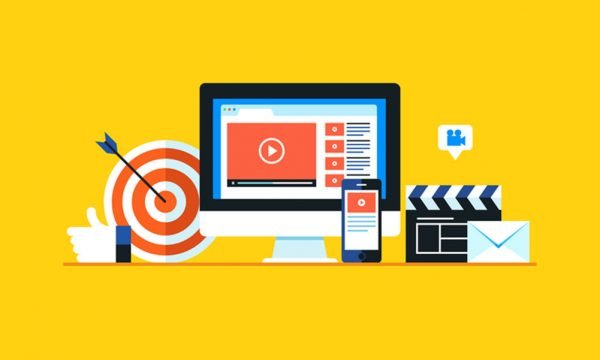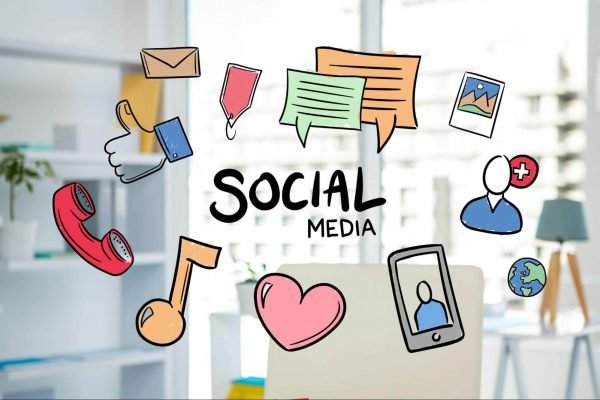You need the right tools in order to build a successful clothing brand. A lot of people want to build a clothing brand or clothing line, but they do not know where to start or they quit because they don’t have the right tools. In this article, I’ll give you a list of tools you need in order to build your own clothing brand and what each one does.
Table of Contents
8 Tools You Need to Build a Clothing Brand.
1. Social media presence.
Social media has become the primary tool for promoting and connecting with the people who are interested in your particular niche. It’s a way to get your message out into the world, share ideas, connect with others, and be part of a larger community.
In order to use social media effectively, you need to know what kind of content works best for you and how best to distribute that content. You can’t simply start sharing links out into the world hoping it will all turn out well. To start creating an effective presence on social media, you need to decide on which networks you want to build your following on (Facebook, Twitter, Instagram). Once that is sorted out, it will help when learning how each network works so that you can create engaging posts that people will want to come back and read time and time again!
2. Good website and marketing strategy.
A good website is essential to the success of your clothing brand. It should be easy to navigate and it should provide a smooth user experience. It should be responsive, so it will look good on any device. It should also be optimized for search engines. If you aren’t able to build an exceptional website yourself, you can hire someone else to help you with this process.
You should also be forming a sound marketing strategy for your clothing line business, which includes marketing tactics such as:
- Partner marketing
- Email marketing
- Social media marketing
- Affiliate marketing
- Paid marketing
You can vet out different software solutions to automate a lot of these marketing tactics such as:
- Affiliate marketing software
- Email marketing tools
- Social media posting software
- PRM software
3. Great connections.
You’ve heard it said before, and you’ll hear it again: It’s not what you know; it’s who you know. This is especially true for entrepreneurs. In the fashion business, having strong relationships and knowing some of the right people can set your brand apart from the others when it comes to getting access to the expertise and opportunities that will take your brand from good to great.
The first step in building a solid network is identifying key players with whom you’d like to connect. These are people who have a hand in areas crucial to your business needs—branding, finance, hiring talent, influencer marketing, etc.—and who have either “been there, done that” or have lots of firsthand experience on the topic of interest. Once you’ve identified individuals whom you’d love to meet up with (if only they knew how much they could help), start by reaching out via social media channels like LinkedIn or Twitter. A direct message requesting a 15-minute phone call will often be enough for someone well-connected in their industry to agree—after all, if they’re happy with their work and skillset, they’ll want to share them!
So now that you’ve got some connections under your belt…
4. A personal blog.
To help you with your branding, it’s a good idea to include a personal blog on your website where you can share stories and experiences with your audience. You can share news articles, industry tips, company updates and more. A blog can help to build trust between you and your customers.
By blogging regularly (even if it’s just once or twice a month) you are able to show people what your brand is doing, what its values are and what it has planned in the future.
5. A great logo.
What is a logo? A logo is a symbol that represents your brand. Your logo should be memorable, impactful, versatile, and appropriate. Think of it as the visual shortcut to your brand.
What makes a great logo? A great logo is uniquely identifiable and stands out from the competition. The best logos are simple and timeless—they’re not going to be outdated in a few months or years because they’re not trendy. It’s also important that your logo communicate what you do as an organization so people understand what you represent at first glance.
How can I get one? If you have an eye for design, you may consider creating your own logo using tools like Photoshop or Canva if you don’t have the budget to hire someone else to create it for you (more on budgets later). If not, do some research on designers who specialize in creating logos—this is often an area of expertise for graphic designers! You can find these creatives online by searching freelance sites such as UpWork or Fiverr.
6. The ability to write content that sells.
We figured out that the best way to go about building our clothing brand was to start with a thesis statement. We knew what direction we wanted our brand to go, and what type of clothing we were going to make. The next step was writing down every idea at once so we could get them out of our heads and into the journal where they could be organized into categories. Along with jotting down ideas in this way, we also started brainstorming how we would express those ideas through graphics, photography and copywriting.
After we laid out the basic ideas for the shop in an organizational way, it was time to brainstorm some copy for each product line that would fit those categories. One of the most important parts of this process was finding a voice for your brand. If you have a vision that is expressed through product design or marketing material, then making sure you find your voice will make everything seem so much more natural and easy . We used humor as part of many facets of our business; it’s something that can be used in marketing materials as well as company slogans and other official communication bits. It makes us want to keep coming back because it’s real and honest—and most importantly people like honesty (#Goals!).
7. Sourced manufacturers for your products.
Once you’ve finalized your designs and selected the perfect fabrics, it’s time to find a partner who will manufacture your clothing products using your tech packs.
At this point in the process, you need to make some decisions about how your clothing will be made. This is when you should consider factors like cost, quality, turnaround time, shipping distance and the type of experience you want for yourself as a brand owner.
In general, domestic manufacturing costs more and has shorter lead times than international factories. If you’re launching a large initial order or a seasonal collection that needs to be finished quickly, domestic manufacturing may be a good choice for you. On the other hand, if price is your biggest concern or if your timeline isn’t urgent then it might make more sense to go with an offshore factory. In either case, because apparel manufacturers are experts at sewing garments they can offer guidance on everything from fabric selection to stitching techniques that will save you money (and headaches) down the road.
8. The perfect clothing line software.
- The software should be easy to use and should integrate with social media, so you can easily share your designs and products.
- The software should have an inventory management system that lets you track what’s selling and what’s not.
- The software should be searchable by name, style type, color etc., so that if I want to see only the shirts I carry in green, it will let me do that.
- The customer support team needs to be friendly, helpful and prompt when answering your questions or when helping you troubleshoot errors in the program.
- It’s easiest to manage your entire supply chain through a solution like tech pack software or a PLM, so check out what’s offered out there.
The most important thing: a free trial version of the software for 30 days or more. This gives you a chance to really see if it is going to work for you without having to lay down any cash before determining if this is the right tool for your business and goals.
Remember that you need the right tools to build a brand.
If you’re interested in taking your clothes brand to the next level, here are some things to keep in mind:
- Figure out how best to market yourself. Your clothing line will be more successful if it is unique and you make sure that people understand what it is.
- Build a successful website. This will let people know what your brand is, and give you an opportunity to share interesting pieces of content, photos and videos.
- Make sure all of your brand’s products are made by quality manufacturers who know how to make them look good.
- Ensure that all materials used in your product (fabric, buttons, etc) are of excellent quality so that nobody leaves a bad impression after wearing the goods.
Most importantly, remember that it’s important for you to have fun when making your clothing line! Only then will the rest fall into place!





